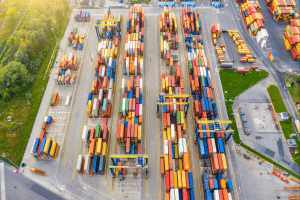The present decade has so far been eventful but not encouraging. Business as usual was disrupted by Covid and the Ukraine war. These events have catalyzed global recession, which has hit the poor and the marginalized.
Climate change is progressing unchecked, all COPs notwithstanding. Unusual and destructive weathers are being witnessed worldwide. In this scenario, what can we expect in 2023?
Geospatial companies weathered the Covid pandemic. Covid provided an opportunity in terms of healthcare. Covid restrictions also showed the effects of unbridled development were reversible. Something that could be used to combat Climate Change.
War in Ukraine opened an entirely new prospect in terms of testing geospatially enabled weapons as well as the use of geospatial for reportage.
When the war ends relief, rehabilitation and rebuilding will need geospatial intervention. The rebuilding could also look at green technologies and environmental sustainability.
Covid and the war have spawned a global recession. How will this impact development? In what way can geospatial help in terms of supporting low-cost solutions to developmental issues? Climate change is here to stay.
The canals of Venice have dried up and India faces an unusually hot spring with the ominous prediction of a severe summer.
The stress must be on sustainability and resilience. Unbridled ‘development’ is a thing of the past. We need solutions for the conservation of scarce resources. Green buildings, mass rapid transportation, distributed facilities and assets, and a sustainable lifestyle are opportunities of the future.
Way ahead
The future is going to be a period when geospatial systems mature and move from a technology push to solutions pull. While technology is attractive and Proof of Concepts of applications are numerous, the need is for the deployment of geospatial information beyond PoC. We do not need technology in search of applications but applications in search of technology.
Geospatial systems provide data and information needed to address a problem. However, solutions need more than data. Any solution has several dimensions – human, societal, environmental, administrative, and political. In developing an optimal solution geospatial data and information plays a significant role.
To serve this role, the geospatial system needs to become a part of the solution by subsuming its identity in the solution.
This can be seen in Location-Based Services, where the underlying communications, GIS, and GNSS services provide seamless access to positioning and navigation without the user needing to know about the details of how the services are provided.
Widespread adoption
Geospatial must find value outside the geospatial ecosystem and it is beginning to move in that direction. Insurance companies, banks, and finance are adopting geospatial data. Perhaps, one of the most significant moves has happened in India where banks have bought into a geospatial solutions company.
Marine resources have rarely been addressed beyond coastal mapping and ship navigation. The land-water-atmosphere interaction is one of the key areas of study when it comes to climate change.
The extension of geospatial technologies to this area is intensifying as the realization dawns that the oceans are not a universal dump for human generated waste.
There is talk about purpose-oriented data sets, Digital Twins, AI, Cloud, and Metaverse. We seem to have mislaid Smart Cities!
These are technologies and not solutions. Technologies must progress and geospatial systems have always adapted and adopted systems to move ahead. That is necessary but not sufficient.
It is only when these become universal in usage and become goto systems for solution providers that the value will be realized. The map marks the beginning of a great journey. The real utility comes when the map ends, and a challenging and uncertain future beckons.
Will geospatial systems participate in the creative destruction of old systems in the interest of a sustainable future? The call for sustainable progress insists that it must even if it means the creative destruction of standalone geospatial systems.
Disclaimer: Views Expressed are Author's Own. Geospatial World May or May Not Endorse it








